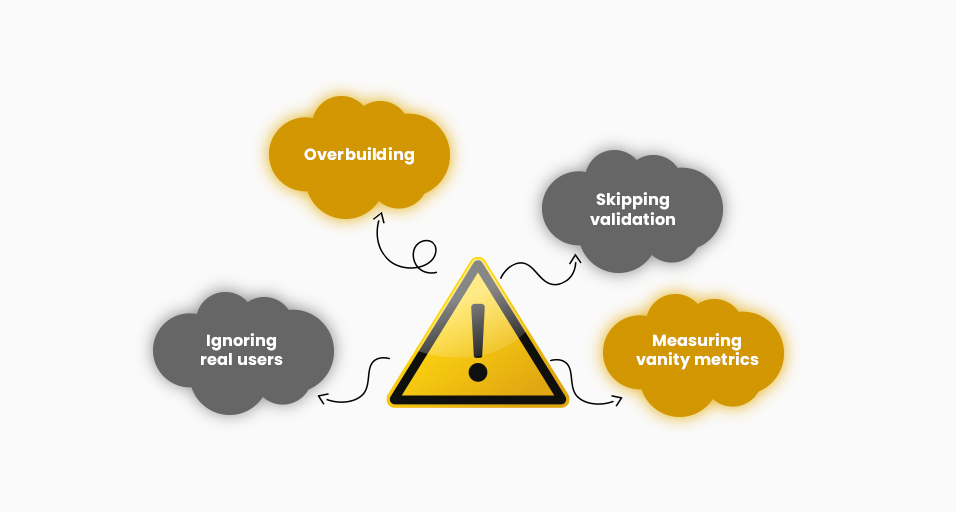Launching a tech startup can feel like standing at the edge of the cliff; you’ve got a bold idea, but you’re unsure whether people will jump with you. The truth is that no successful startup skyrocketed overnight. Airbnb started by renting air mattresses. Dropbox began with a simple demo video. Zomato was launched as a PDF menu site.
What did they all have in common? They built an MVP: a Minimum Viable Product. An MVP is the simplest version of your idea that solves one core problem, tests demand, and validates your direction before building the full product or service.
Now, if you’re asking: “How do I create an MVP for my startup?”, this guide will walk you through every step:
What is an MVP?
A Minimum Viable Product (MVP) is the leanest version of your idea that delivers core values to the customers. It’s not about cutting corners but focusing on solving the key problem as simply as possible.
For a product startup, an MVP could be a clickable prototype or a working demo. For a service startup, an MVP can be offering your service manually before automating or scaling it.
Examples proving the power of MVPs:
- Instagram (Product MVP) originally started as Burbn, a check-in app, but users loved just the photo-sharing feature. Focusing on that core feature was their MVP, and it exploded.
- Zappos ( Service MVP) went to photograph shoes from local stores and posted them online. When someone ordered, he bought the pair himself and shipped it. Manual work validated whether people would actually buy shoes online.
The takeaway? Minimum Viable Products strip away complexity and focus on proving the demand.
Why Small Startups Begin Small: The MVP Advantage

Every successful startup began by asking one simple question: “Does anyone actually need this?” Launching without building is like driving blindfolded; you may get somewhere, but chances are you’ll crash.
Here are the key advantages of why startups should choose to build MVPs:
- Validate demand early – Ensure people actually want your idea, which solves a core problem for them. Better to spend 10,000 dollars and pivot than spend 10 lakhs on something no one wants.
- Save time and money – Focus on the core functionality that solves the problem. Why build 10 features if users actually just care about one?
- Attract investors – An MVP that shows real traction is far more convincing than just PowerPoint pitches. Investors love working on products with actual user feedback.
- Learn fast – Building an MVP helps you know the weak points in your products or services. You get real feedback. Every improvement is guided by actual user behavior, not assumptions.
How to Build an MVP for your Startup in 6 Smart Steps:
Picture this: You’ve got the idea, you’re excited, but the question pounding in your head is “Where do I even start?”. Here’s the playbook.
1. Define the problem clearly– Define what exact pain points you are solving for the people? Will users pay for that solution? If your startup solves 10 things at once, you’re already overbuilding.
2. Identify your core feature – Identify the immediate and easiest solution for that problem. Just focus on the core solution first and not the unnecessary features.
3. Choose the MVP Type ( Product or Service) – It solely depends on your startup model
- Product MVP → mockups, clickable prototypes, beta versions.
- Service MVP → deliver the service manually, test with first paying customers.
4. Map the minimum features – Strip it down to only what is important and what matters the most. Do not add features just for looks; just solve one problem for one group of people.
5. Launch to a small audience – Don’t scale yet. Pick a small relevant group to test with: friends, early adopters, niche communities. Collect real feedback.
6. Iterate quickly – Refine based on what you have learned from users. Your MVP isn’t your final product; it’s your first draft. The faster you collect feedback and adapt, the closer you get to product-market fit.
Common Mistakes to Avoid When Building an MVP

- Overbuilding – Adding too many features instead of testing the one that actually matters.
- Skipping validation – An MVP isn’t just a smaller product; it’s a learning tool. Always validate demand first.
- Ignoring real users – Feedback from paying users matters more than feedback from friends.
- Measuring vanity metrics – Focusing on downloads, likes, or traffic instead of engagement and retention.
Conclusion: Start Small, Think Big

Minimum Viable Product is not about launching the roughest or cheapest version; It is about launching the smartest, leanest version that proves your core assumption.
Whether it’s a Product MVP or Service MVP, the principle remains the same:
- Build something that solves the core problem.
- Focus on one main feature.
- Test with real users
- Learn, adapt, and grow
The most successful startups didn’t get it right on day one. They tested, learned, refined, and scaled gradually. Your first MVP is the smartest way to begin turning your idea into reality.
Every unicorn startup you admire once stood where you are now, uncertain, untested, and a little scared. What set them apart? They launched their MVP. Are you ready to launch your MVP and validate your startup idea?
Not sure whether to choose a Product MVP or a Service MVP? Don’t worry, we’ve got you. In our next blog, we’ll break down the differences and help you pick the approach that’s right for your startup.
Want to skip the guesswork? Connect with our experts and get guidance to build your MVP the smart way.
FAQs
Q1. Why is building an MVP important for your startup?
An MVP helps you validate your startup idea early, saves time and money, attracts investors, and gathers real user feedback to improve the product before investing heavily in development.
Q2. How long should MVP Development take?
An MVP should be built quickly, typically within a few weeks to a couple of months, focusing only on the core functionality necessary to solve the main problem
Q3. Can an MVP fail, and what should one do if it fails?
Yes, many MVPs don’t succeed. If an MVP fails, analyse user feedback, identify the weak points, iterate on your idea, pivot your approach, and try again. An MVP is the learning tool, not the full product.
Q4. Is a poorly built MVP better than no MVP at all?
No always. A poorly designed MVP can give a wrong impression and repel early adopters. The goal is not to launch fast but to launch smart.
Q5. Can I skip building an MVP if I am sure of my idea?
No, even the best ideas need market validation. An MVP reduces the risk of building something no one wants by testing assumptions early, helping you improve faster.
